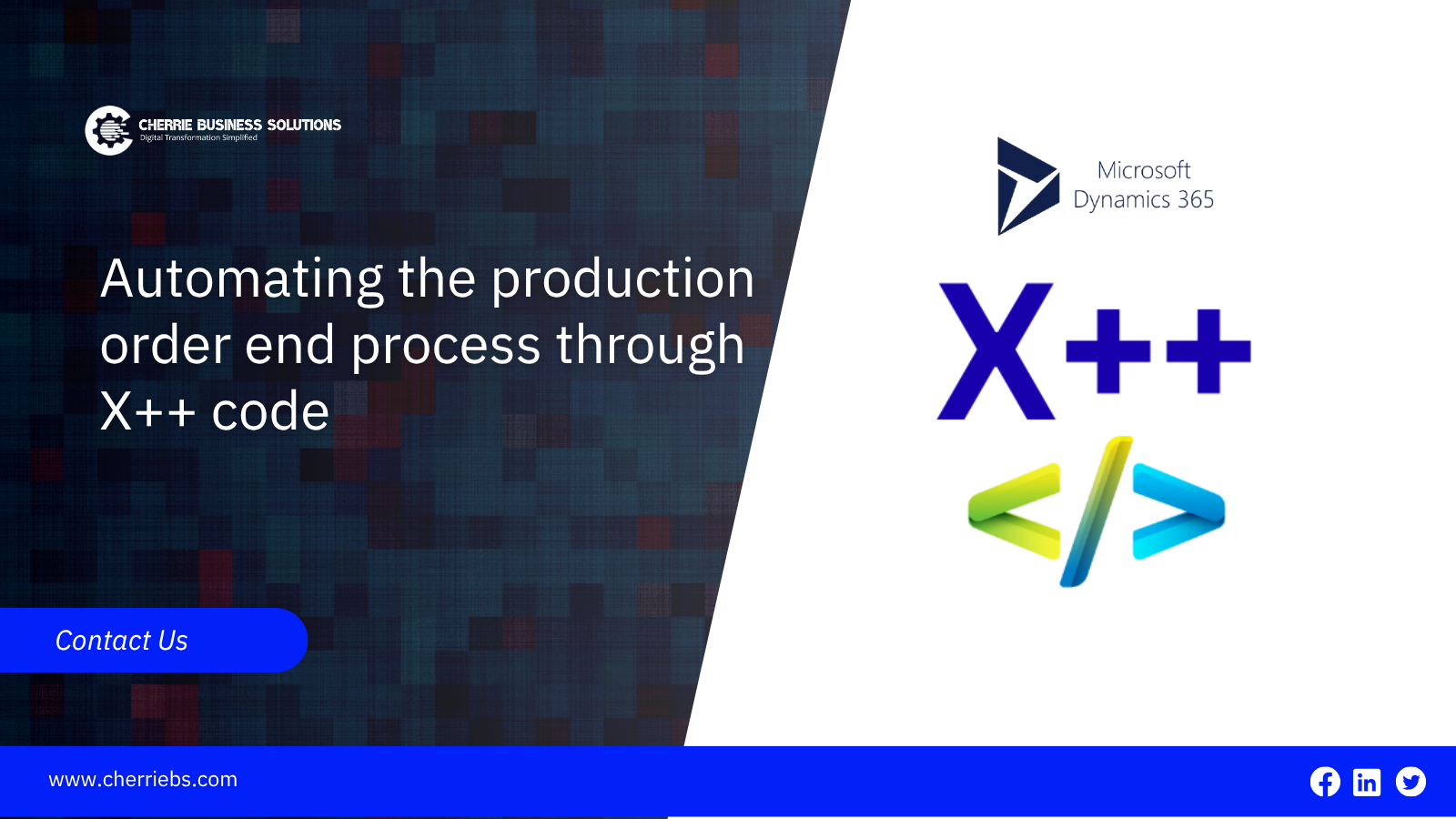In manufacturing scenarios where the production workflow is stable, standardized, and does not require additional manual interventions such as quality inspections, approvals, or rework, the production order end process can be fully automated. This means that once the production activities like reporting as finished and consumption of materials are completed, the system can automatically post the final steps of the production order lifecycle using predefined logic. By automating the end process, businesses can eliminate repetitive tasks, reduce human errors, and accelerate the overall order closing procedure. This is particularly beneficial in high-volume or continuous production scenarios where speed, consistency, and efficiency are critical.
Key Benefits of Automating the Production Order End Process in Manufacturing
1. Time Savings
-
Manual closure of production orders takes time and resources.
-
Automation speeds up the month-end or shift-end processes by instantly completing eligible orders.
2. Reduced Manual Errors
-
Eliminates the risk of human errors in updating quantities, posting costs, or closing orders.
-
Ensures consistency in how and when orders are ended.
3. Improved Production Efficiency
-
Frees up planner and shop floor supervisor time for higher-value tasks like planning and exception management.
-
Seamless transition to the next production orders without unnecessary delays.
4. Timely Financial Reporting
-
Ensures that production costs are posted on time.
-
Supports accurate Work in Progress (WIP) and cost of goods sold (COGS) reporting at month-end or period-close.
5. System Resource Optimization
-
Automatically clearing completed production orders helps reduce system load and data clutter.
-
Improves system performance by reducing the number of open/active orders.
6. Better Inventory Accuracy
-
Automatically posts finished goods and update inventory balances without delay.
-
Ensures inventory reflects the real-time production output.
7. Consistency in Execution
-
Ensures that the production end process is executed uniformly across shifts, plants, or users.
8. Supports Lean Manufacturing Practices
-
Reduces non-value-added activities.
-
Encourages just-in-time inventory and minimal intervention production processes.
Let See Code Snippet for automating production order end-process through X++ code in D365,
class ProductionOrderEndingSampleClassCBS
{
/// <summary>
/// THIS CLASS WON'T CREATE PRODUCTION ORDER, PICKLIST AND RAF JOURNAL, WHICH ARE PREREQUISITES.
/// COST OF THE PICKLIST MATERIAL(CONSUMPTION) MUST HAVE BEEN ENTERED IN PICKLIST JOURNAL AND POSTED.
/// THE METHOD EndProdOrder(date mfdate,ProdId prodId) SHOULD BE CALLED AFTER RAF JOURNAL OF RECEIVING MATERIALS GOT POSTED.
/// </summary>
public void CreateProductionOrder(date mfdate,itemId pickItemId,itemId RAFItemId, real productionQty, real pickQty, real RAFQty)
{
/// <remarks>
/// The following code till EndProdOrder(mfdate,_prodId) is for explanatory purpose only.
/// The Production Order, PickList and RAF create and post has be handled here.
/// </remarks>
//--Create ProdId
//--Prod Order Code starts
//ProdParmStartUp prodParmStartUp;
//ProdMultiStartUp prodMultiStartUp;
//ProdId _prodId = prodid;
//Qty _qty = productionQty;
//ttsbegin;
//prodMultiStartUp = ProdMultiStartUp::construct(null);
//--
//--
//ttsbegin;
//--Prod Order Code ends
//calling the PickList journal creation
PickListJournalCreateClassCBS::createAndPostPickingListJournal(mfdate,_prodId,pickItemId,pickQty);
//calling the RAF journal creation
//This RAF journal is of receiving the production material
RAFJournalCreateClassCBS::createAndPostRAFJournal(mfdate,_prodId,pickItemId,pickQty);
//calling the Production Ending
//This RAF journal is of receiving the production material
this.EndProdOrder(mfdate,_prodId);
//calling the RAF journal creation
}
protected void EndProdOrder(date mfdate,ProdId prodId)
{
////////////////////////////////////////////////
///
// Step 1: Tables declaration
prodParmReportFinished prodParmReportFinished;
prodParmHistoricalCost prodParmHistoricalCost;
prodUpdReportFinished prodUpdReportFinished;
prodTable prodTable;
ttsBegin;
str prodIdNew = prodId;
// Step 2: Insert prodParmHistoricalCost
prodParmHistoricalCost.clear();
prodParmHistoricalCost.ProdId = prodIdNew;
//Table extended and custom date field added
prodParmHistoricalCost.CostingDateCBS = mfdate;
prodParmHistoricalCost.insert();
select prodTable where prodTable.prodid == prodIdNew;
// Step 3: Insert ProdParmReportFinished
delete_from prodParmReportFinished where prodParmReportFinished.ProdId == prodIdNew;
// The RAF Journal for ending the production order.
prodParmReportFinished.clear();
prodParmReportFinished.initParmDefault();
prodParmReportFinished.ProdId = prodTable.ProdId;
prodParmReportFinished.ItemId = prodTable.ItemId;
prodParmReportFinished.InventDimId = prodTable.InventDimId;
prodParmReportFinished.QtyGood = 0.0;
prodParmReportFinished.QtyError = 0.0;
prodParmReportFinished.EndJob = NoYes::Yes;
prodParmReportFinished.TransDate = mfdate; //systemDateGet();
prodParmReportFinished.AutoUpdate = NoYes::Yes;
// Post the "Report as finished" RAF
prodUpdReportFinished = ProdUpdReportFinished::newParmBuffer(prodParmReportFinished);
prodUpdReportFinished.run();
info(strFmt("Production order %1 has been reported as finished.", prodIdNew));
ttsCommit;
ttsbegin;
//Setting the costing date to our production date
GlobalFormDateStorageClassCBS::setCostingDate(mfdate);
//Step 4: Inserting the prodMultiHistoricalCost with parameters
ProdMultiHistoricalCost prodMultiHistoricalCost;
prodTable = ProdTable::find(prodIdNew);
prodMultiHistoricalCost = ProdMultiHistoricalCost::construct(new Args());
RunBaseMultiParm::initParm(prodMultiHistoricalCost);
//***** ** *********
//Posting the historical cost
prodMultiHistoricalCost.insert(prodTable, prodMultiHistoricalCost.defaultParmBuffer());
prodMultiHistoricalCost.run();
ttscommit;
///
////////////////////////////////////////////////
}
}
//*Below added is a separate class used for setting the costing date to manufacturing date that we use to post the RAF Journal.
public static class GlobalFormDateStorageClassCBS
{
private static TransDate costingDate;
public static void setCostingDate(TransDate _date)
{
costingDate = _date;
}
public static TransDate getCostingDate()
{
return costingDate;
}
}
Conclusion
Automating the production order end process in scenarios where no further manual checks or quality validations are required offers significant operational advantages. By leveraging X++ code within Microsoft Dynamics 365 Finance and Operations, businesses can streamline repetitive tasks, enhance data accuracy, and ensure faster order closure. This not only boosts efficiency but also frees up valuable resources for more strategic activities. For manufacturers aiming to optimize their ERP processes, automation is not just a convenience—it’s a competitive necessity.
For any further queries or consultation, Get in touch with our Microsoft ERP Experts.

